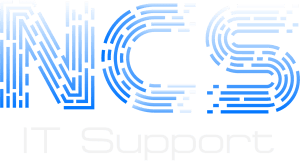Security in the realm of business IT has never been more crucial than it is today. With the rapid advancements in technology, businesses must stay ahead of the curve when it comes to protecting their sensitive data and systems. In order to combat the ever-evolving landscape of cyber threats, companies are constantly adapting and adopting new strategies in IT security management. This blog post will investigate into the latest trends in business IT security management that are shaping the way organizations are safeguarding their digital assets.
Evolving Threat Landscape
To effectively manage IT security in any business, it is crucial to stay informed about the evolving threat landscape. The world of cybersecurity is constantly changing, with new threats emerging and existing ones evolving. By understanding these changes, businesses can implement proactive measures to safeguard their sensitive data and systems.
Emerging Cybersecurity Threats
Cybersecurity threats are becoming more sophisticated and challenging to detect. From ransomware attacks to supply chain vulnerabilities, businesses face a myriad of risks that can have serious consequences if not addressed promptly. As technology advances, so do the tactics used by cybercriminals, making it essential for organizations to stay vigilant and update their security protocols regularly.
As the digital landscape continues to evolve, businesses must be prepared to combat emerging cybersecurity threats proactively. By investing in advanced security tools, conducting regular security audits, and educating employees about best practices, organizations can strengthen their defenses and mitigate risks effectively.
The Impact of Remote Work on Security
Security
This shift to remote work has introduced new challenges for IT security management. With employees accessing company networks from various locations and devices, the attack surface has expanded, making it easier for cybercriminals to exploit vulnerabilities. Organizations must adapt their security strategies to accommodate remote work environments and ensure that sensitive data remains protected.
This requires a combination of robust security measures, such as multi-factor authentication, encrypted connections, and employee training on cybersecurity best practices. By taking a proactive approach to security management in remote work settings, businesses can minimize the risk of data breaches and keep their sensitive information safe from cyber threats.
Advancements in Security Technologies
The Rise of Artificial Intelligence and Machine Learning
Now, one of the most significant advancements in business IT security management is the rise of artificial intelligence (AI) and machine learning (ML) technologies. These cutting-edge tools have revolutionized the way organizations detect and respond to security threats, allowing for real-time monitoring and proactive defense mechanisms.
For businesses, AI and ML offer an unparalleled level of protection against evolving cyber threats by analyzing vast amounts of data to identify patterns and anomalies that may indicate a potential security breach. This proactive approach enables security teams to respond swiftly to incidents and even predict future threats, strengthening the overall cybersecurity posture of the organization.
Blockchain for Enhanced Security
For organizations seeking enhanced security measures, blockchain technology has emerged as a robust solution. By leveraging decentralized and encrypted networks, blockchain enhances data security, ensuring tamper-proof storage and transactions. This makes it nearly impossible for hackers to alter or access sensitive information without authorization.
For businesses handling critical data such as financial transactions or personal information, integrating blockchain technology can instill trust among customers and partners. The immutability and transparency of blockchain not only strengthen security measures but also streamline compliance processes, enhancing overall operational efficiency.
For instance, blockchain’s distributed ledger technology creates a chain of blocks containing encrypted and validated transactions, creating a secure and transparent audit trail. This enables organizations to track and verify every interaction with data, enhancing accountability and reducing the risk of unauthorized access or fraudulent activities. By embracing blockchain for enhanced security, businesses can stay ahead of cyber threats and safeguard their sensitive information effectively.
Best Practices in Security Management
Implementing a Zero Trust Architecture
For businesses looking to enhance their security posture, implementing a Zero Trust Architecture is becoming increasingly popular. This approach challenges the traditional security model that assumes everything inside a corporate network is safe. Instead, Zero Trust operates on the principle of “never trust, always verify,” where access controls are strictly enforced based on user identity and other factors such as device health, location, and behavior.
By adopting a Zero Trust Architecture, organizations can reduce their attack surface, minimize the risk of data breaches, and improve overall security resilience. This model aligns well with the modern IT landscape where employees are accessing corporate resources from various locations and devices, making traditional perimeter defenses inadequate.
The Importance of Regular Security Audits
Security audits play a crucial role in assessing the effectiveness of an organization’s security measures. Conducting regular audits helps identify vulnerabilities, compliance gaps, and areas for improvement in the security infrastructure. These audits can be internal or external, with the latter bringing in a fresh perspective and expertise to evaluate the security controls.
Security audits are essential for maintaining regulatory compliance, demonstrating due diligence to stakeholders, and continuously enhancing the overall security posture. By conducting regular audits, organizations can proactively address security weaknesses before they are exploited by malicious actors, thus reducing the risk of costly security incidents.
Security audits are a critical component of a robust security management strategy. They provide a snapshot of the current security posture, identify areas of weakness, and offer actionable insights for improvement. Regular audits help organizations stay ahead of evolving threats and demonstrate a commitment to safeguarding sensitive information and assets.

Role of Compliance and Regulation
Not only is IT security management responsible for protecting the organization’s data and assets, but it also plays a crucial role in ensuring compliance with various industry regulations and data protection laws. Compliance and regulation are essential components of a robust IT security strategy that organizations must prioritize to avoid hefty fines and reputational damage.
Understanding Global Data Protection Laws
Understanding the landscape of global data protection laws is vital for businesses operating in multiple jurisdictions. Regulations such as the General Data Protection Regulation (GDPR) in the European Union and the California Consumer Privacy Act (CCPA) in the United States have set strict guidelines for how organizations collect, store, and protect personal data. Non-compliance with these laws can result in severe penalties, making it imperative for businesses to have a thorough understanding of their obligations.
Compliance with data protection laws goes beyond avoiding financial penalties. It helps build trust with customers, enhances the organization’s reputation, and mitigates the risk of data breaches. By staying informed about the latest developments in global data protection laws and implementing necessary measures, businesses can demonstrate their commitment to data privacy and security.
Adapting to Industry-Specific Regulatory Changes
Compliance with industry-specific regulations is equally important for organizations operating in sectors like healthcare, finance, or e-commerce. These sectors often have unique regulatory requirements aimed at protecting sensitive information and ensuring ethical business practices. Adapting to industry-specific regulatory changes involves staying updated on evolving laws, implementing compliant IT security measures, and conducting regular audits to assess adherence to regulations.
Any organization subject to industry-specific regulations must allocate resources to ensure compliance and actively monitor developments that may impact their IT security practices. Failure to adapt to regulatory changes can result in legal consequences, financial losses, and damage to the organization’s reputation. It is crucial for businesses to proactively address compliance requirements to mitigate risks and maintain a strong security posture.
Training and Awareness Programs
Keep a pulse on the latest trends in business IT security management by prioritizing training and awareness programs within your organization. These programs are crucial for equipping employees with the necessary knowledge and skills to protect company data and systems from cyber threats.
Continuous Employee Education
The key to effective IT security management is ensuring that employees are well-informed about the latest security threats and best practices. Continuous employee education through regular training sessions can help employees stay up-to-date on the evolving threat landscape and learn how to recognize and respond to potential security risks.
By investing in ongoing education for employees, organizations can create a security-conscious culture where every employee understands their role in safeguarding sensitive information. This proactive approach can significantly reduce the likelihood of security breaches caused by human error or ignorance.
Simulated Phishing and Security Drills
With cyber threats becoming increasingly sophisticated, it is essential to conduct simulated phishing and security drills to test employees’ responses to real-life scenarios. These drills can help identify vulnerabilities in employees’ awareness and behavior, allowing organizations to address gaps through targeted training and awareness initiatives.
To enhance the effectiveness of simulated phishing and security drills, organizations can utilize specialized tools and services that simulate realistic cyber attacks. These tools can provide valuable insights into employees’ susceptibility to social engineering tactics and help improve overall security awareness within the organization.

The Integration of IT Security in Business Strategy
After investing significant resources in IT security measures, businesses are realizing the importance of integrating these efforts into their overall business strategy. This strategic approach not only enhances the organization’s security posture but also aligns it with the business objectives, making it a crucial aspect of operations.
Aligning Security with Business Objectives
For businesses to succeed in today’s digital landscape, it is imperative to align IT security with their core business objectives. This means integrating security practices that not only protect the organization from cyber threats but also enable it to achieve its strategic goals. By aligning security with business objectives, companies can ensure that their security investments are targeted towards mitigating risks that directly impact the business’s bottom line.
To achieve this alignment, businesses need to have a clear understanding of their overall business strategy and how IT security can support and enhance it. This involves collaboration between security and business teams to identify and prioritize security initiatives that directly contribute to achieving strategic objectives. By embedding security into the fabric of the business, organizations can proactively address risks and leverage security as a competitive advantage.
C-suite Involvement in Cybersecurity Matters
Cybersecurity is no longer just an IT issue—it is a strategic business concern that requires active involvement from the C-suite. Executives such as the CEO, CFO, and CIO play a crucial role in setting the tone for the organization’s approach to cybersecurity and ensuring that it is integrated into the overall business strategy. Their leadership is essential in driving a culture of security awareness and accountability across the organization.
C-suite executives need to be actively engaged in cybersecurity matters, providing oversight, guidance, and support to the security team. By prioritizing cybersecurity on the executive agenda, businesses can foster a proactive security posture that is aligned with business objectives. This involvement also ensures that cybersecurity risks are adequately communicated and understood at the highest levels of the organization, enabling informed decision-making and resource allocation.
To empower C-suite executives to effectively participate in cybersecurity matters, organizations should provide them with regular updates on the evolving threat landscape, potential impact on business operations, and the effectiveness of existing security measures. This ongoing dialogue enables executives to make well-informed decisions that prioritize security investments and align them with the organization’s strategic goals. By fostering a culture of cybersecurity at the executive level, businesses can strengthen their overall security posture and resilience against cyber threats.
Summing up
On the whole, the latest trends in business IT security management signify a shift towards more proactive and sophisticated approaches to safeguarding sensitive data and systems. With the rise of cloud computing, AI, and IoT devices, organizations are prioritizing cybersecurity measures such as zero trust architecture, threat intelligence sharing, and automation of security processes. Compliance with regulations like GDPR and HIPAA remains a top priority, driving the adoption of encryption, multifactor authentication, and risk assessment frameworks. As cyber threats continue to evolve, businesses must stay agile and adaptive in their IT security strategies to stay ahead of potential breaches and data leaks.



